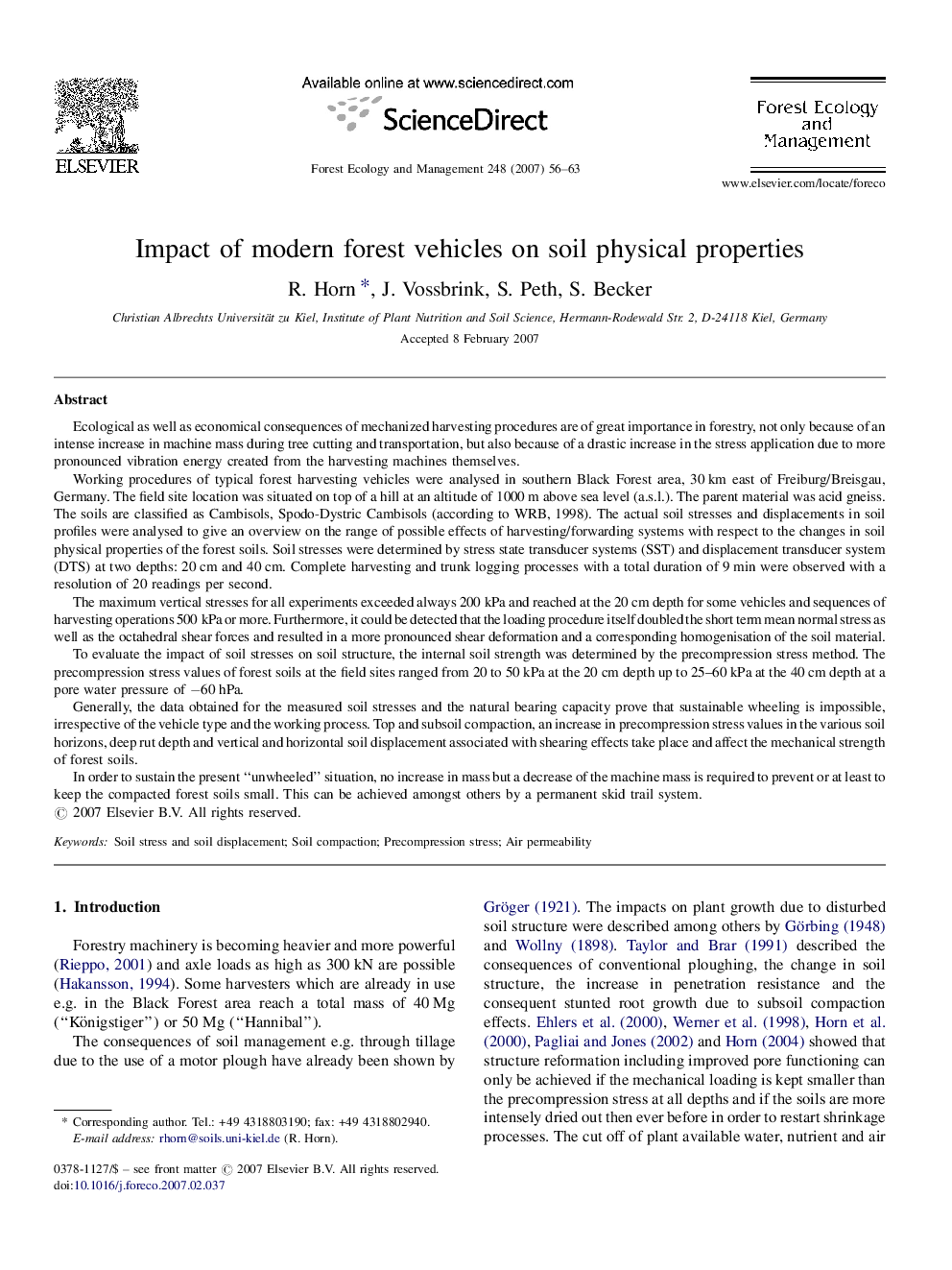| کد مقاله | کد نشریه | سال انتشار | مقاله انگلیسی | نسخه تمام متن |
|---|---|---|---|---|
| 89563 | 159345 | 2007 | 8 صفحه PDF | دانلود رایگان |

Ecological as well as economical consequences of mechanized harvesting procedures are of great importance in forestry, not only because of an intense increase in machine mass during tree cutting and transportation, but also because of a drastic increase in the stress application due to more pronounced vibration energy created from the harvesting machines themselves.Working procedures of typical forest harvesting vehicles were analysed in southern Black Forest area, 30 km east of Freiburg/Breisgau, Germany. The field site location was situated on top of a hill at an altitude of 1000 m above sea level (a.s.l.). The parent material was acid gneiss. The soils are classified as Cambisols, Spodo-Dystric Cambisols (according to WRB, 1998). The actual soil stresses and displacements in soil profiles were analysed to give an overview on the range of possible effects of harvesting/forwarding systems with respect to the changes in soil physical properties of the forest soils. Soil stresses were determined by stress state transducer systems (SST) and displacement transducer system (DTS) at two depths: 20 cm and 40 cm. Complete harvesting and trunk logging processes with a total duration of 9 min were observed with a resolution of 20 readings per second.The maximum vertical stresses for all experiments exceeded always 200 kPa and reached at the 20 cm depth for some vehicles and sequences of harvesting operations 500 kPa or more. Furthermore, it could be detected that the loading procedure itself doubled the short term mean normal stress as well as the octahedral shear forces and resulted in a more pronounced shear deformation and a corresponding homogenisation of the soil material.To evaluate the impact of soil stresses on soil structure, the internal soil strength was determined by the precompression stress method. The precompression stress values of forest soils at the field sites ranged from 20 to 50 kPa at the 20 cm depth up to 25–60 kPa at the 40 cm depth at a pore water pressure of −60 hPa.Generally, the data obtained for the measured soil stresses and the natural bearing capacity prove that sustainable wheeling is impossible, irrespective of the vehicle type and the working process. Top and subsoil compaction, an increase in precompression stress values in the various soil horizons, deep rut depth and vertical and horizontal soil displacement associated with shearing effects take place and affect the mechanical strength of forest soils.In order to sustain the present “unwheeled” situation, no increase in mass but a decrease of the machine mass is required to prevent or at least to keep the compacted forest soils small. This can be achieved amongst others by a permanent skid trail system.
Journal: Forest Ecology and Management - Volume 248, Issues 1–2, 30 August 2007, Pages 56–63